












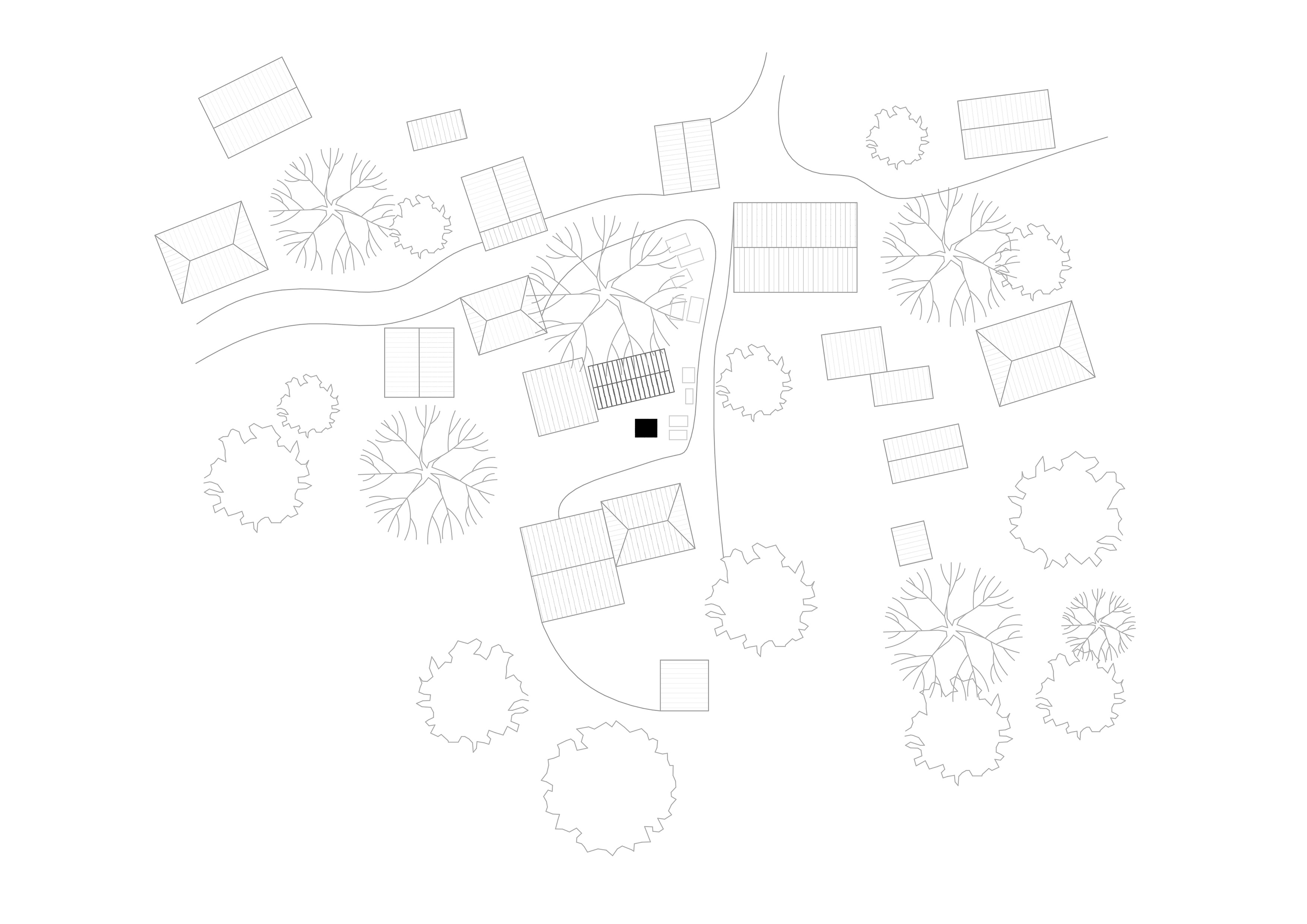
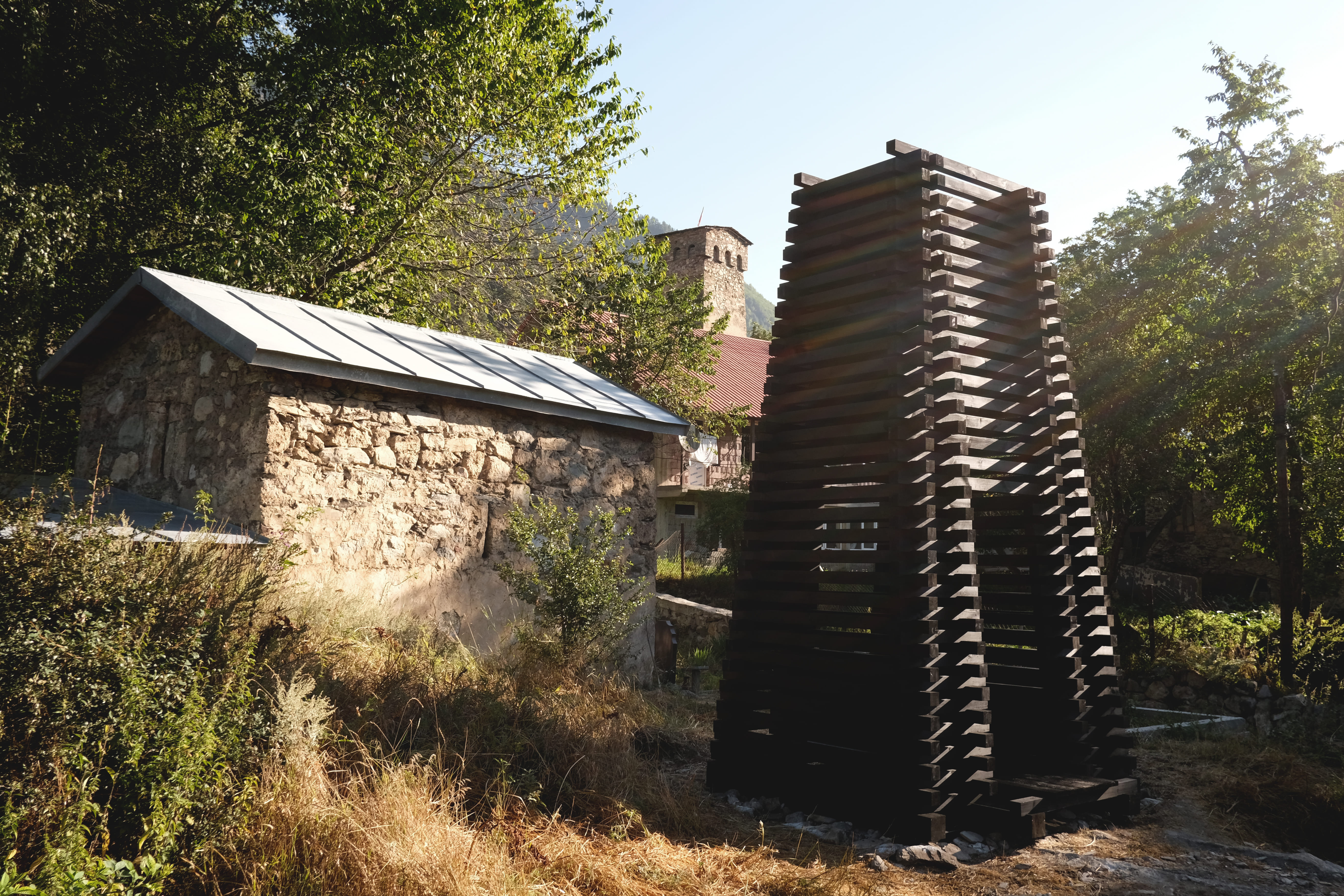

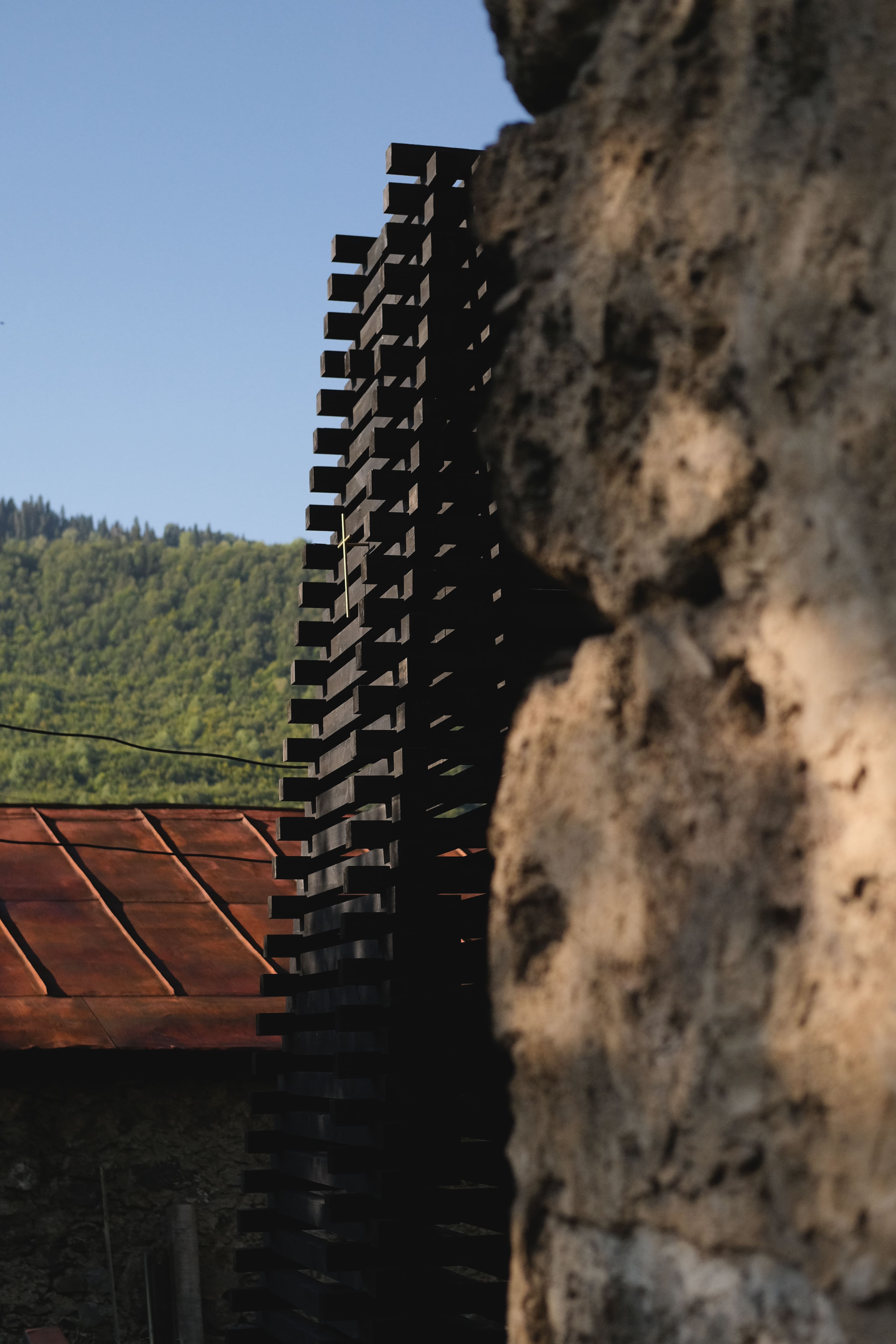


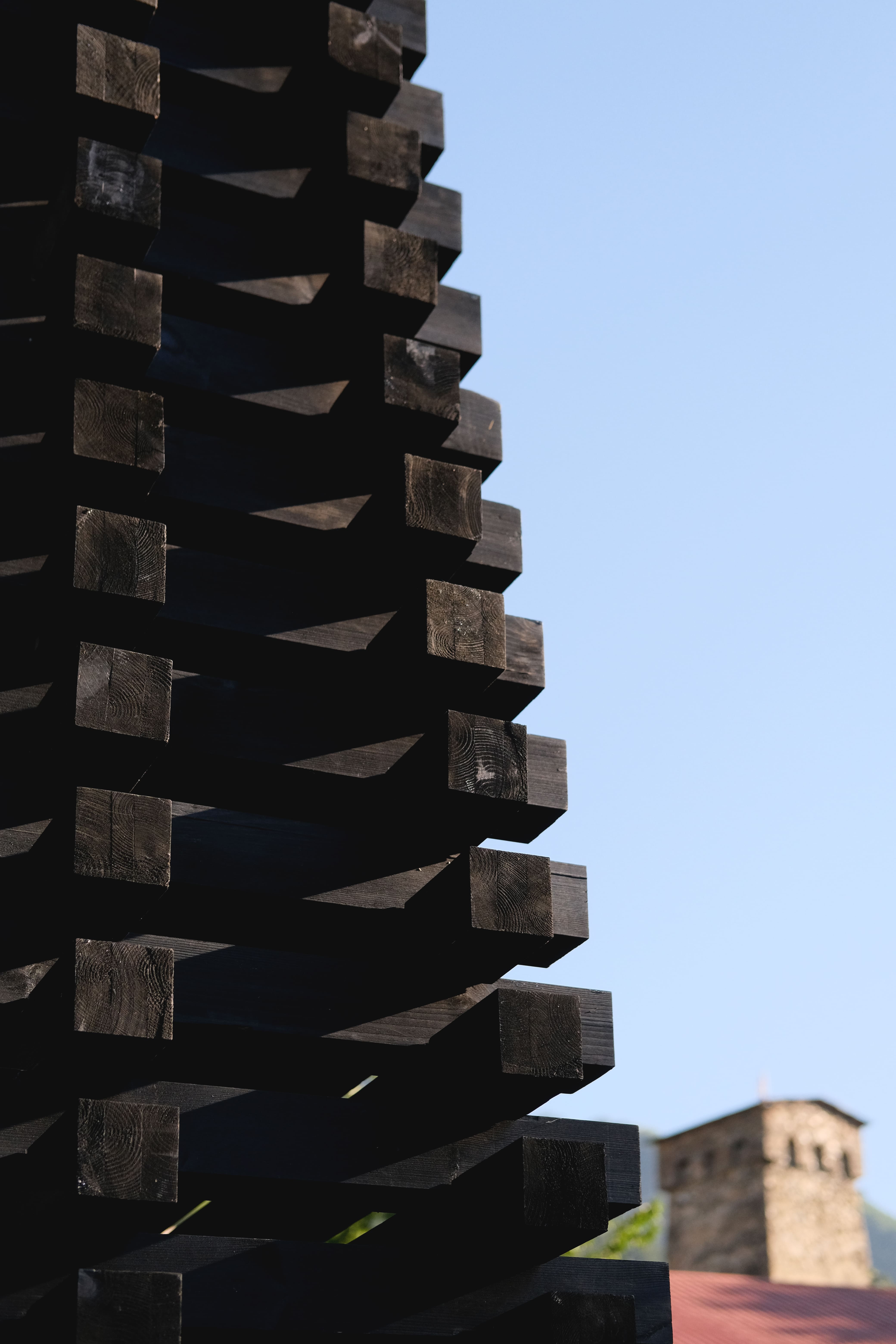

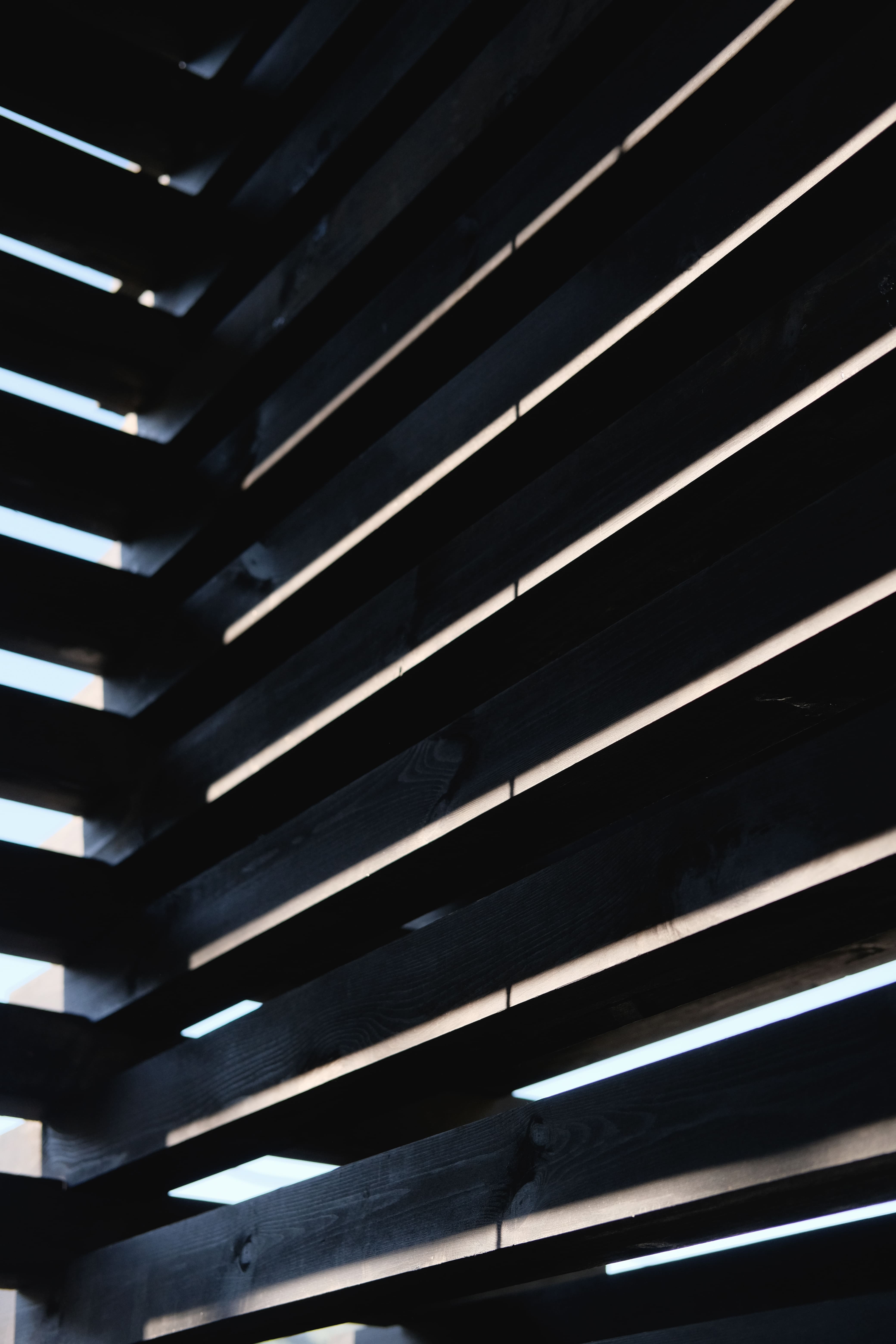

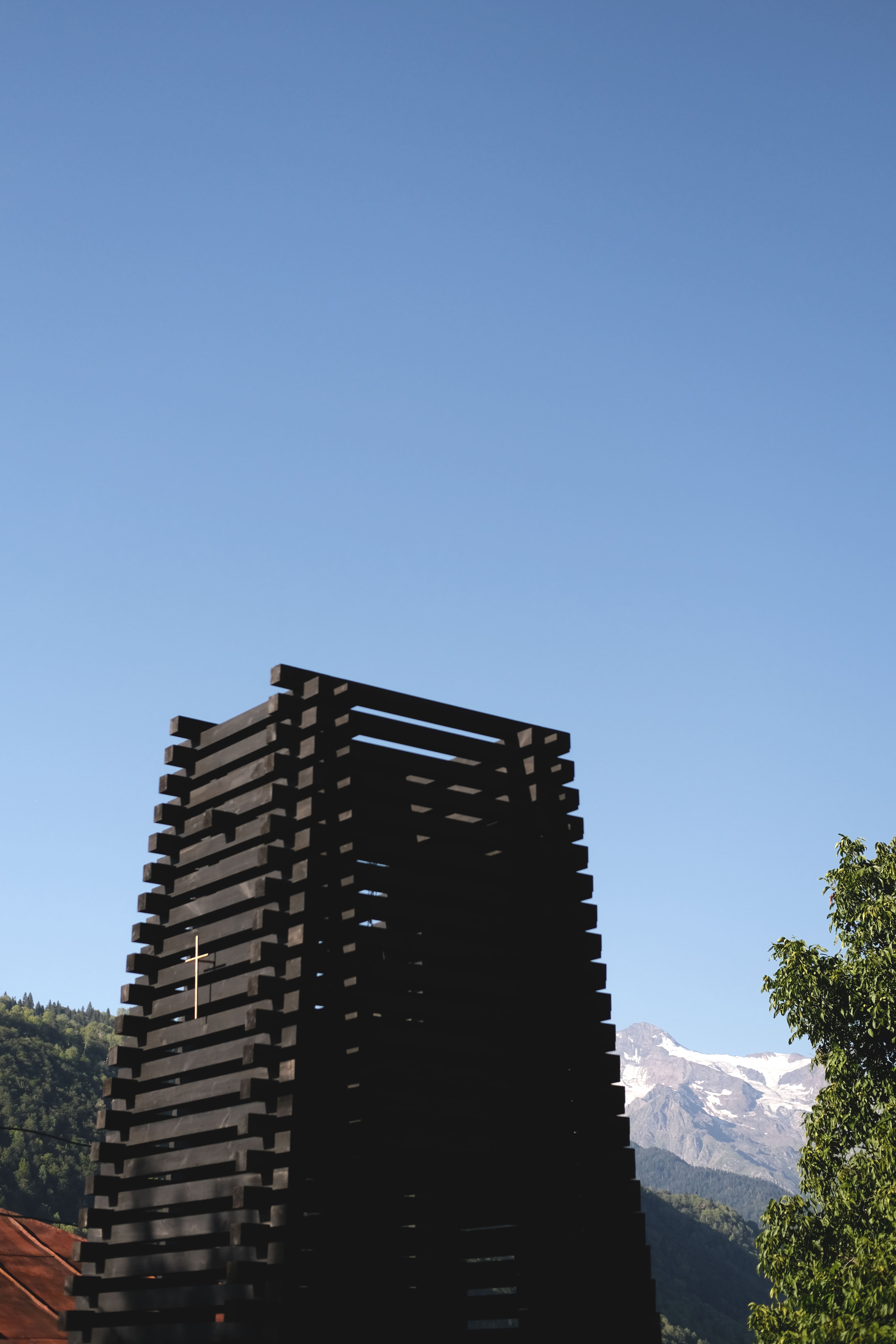

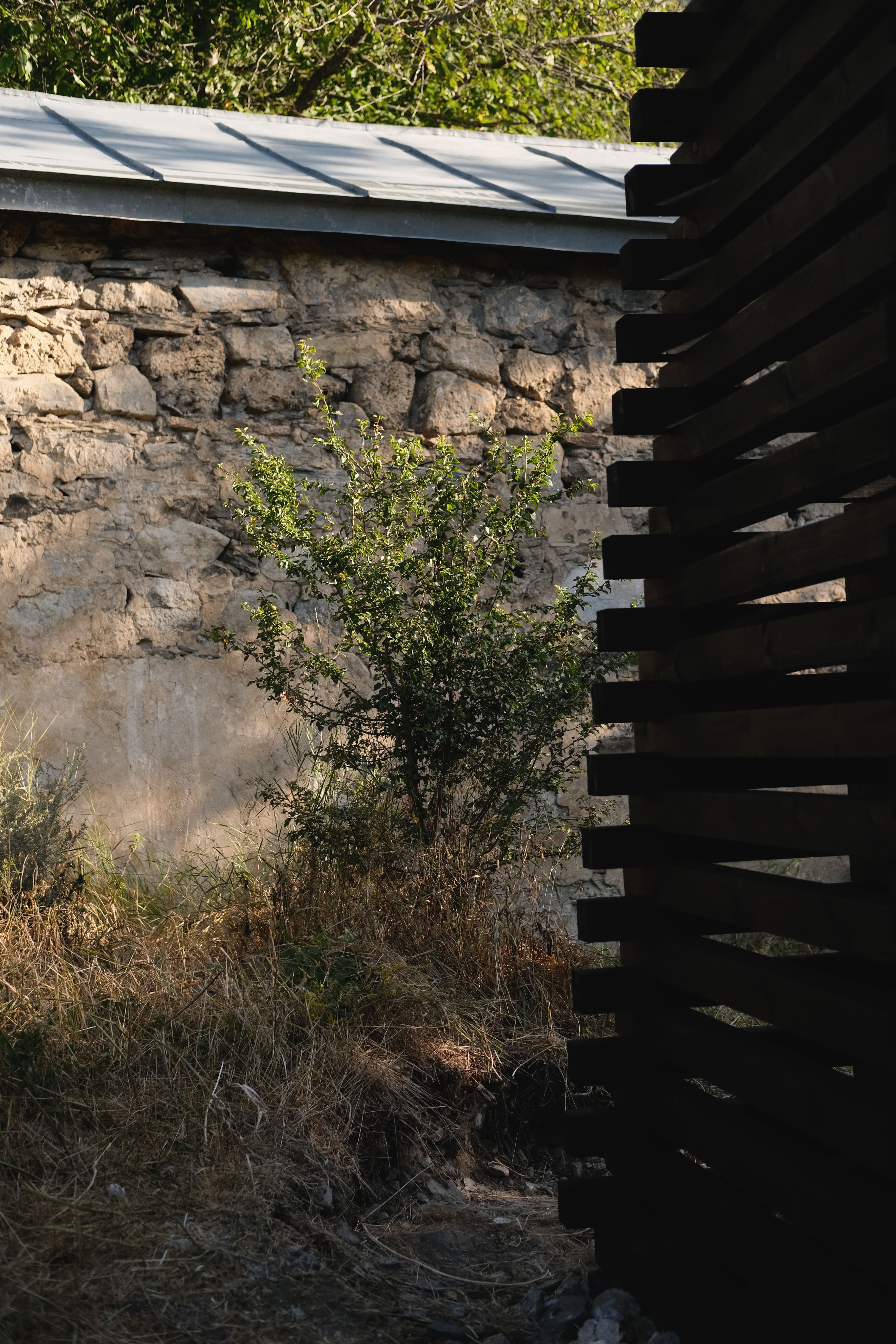


Cenotaph
Location: 1st - Tbilisi, Georgia (Temporary); 2nd - Soli, Svaneti, Georgia
Year: 2024
Status: Complete
Beyond the Mtkvari and Vere, Tbilisi hosts many small rivers, though they’re often used as waste dumps. These rivers are nearly forgotten and have become hazardous. As hydrologist and Tbilisi State University PhD Nika Tsitelashvili explains, “Most of the rivers are buried in pipes nowadays, and in those parts where they’re not, people throw garbage and companies dump construction waste. Sewage water also goes into them.” With Tbilisi’s ongoing expansion, urban development around these rivers has intensified, leading to increased pollution. – Radio Liberty, “The 12 Forgotten Rivers of Tbilisi”
In reflecting on the current state of these buried rivers, we imagined an intervention where water would be the central element, bringing this problem to light and telling the story of the rivers' abandonment.
Upon reviewing the sites proposed by the Tbilisi Architecture Biennial (TAB) for intervention, we selected locations that captured their interest and visited them to reflect. Despite the varied contexts, these places shared a common theme: neglect and disregard, yet they offered a surprising sense of tranquility, often in the heart of densely populated areas. Visiting these sites felt like stepping into nature, just a stone’s throw from the city’s bustling activity.
We decided that this feeling of instant calm would define their chosen site, allowing not only a platform for their statement but also a space where visitors could pause, linger, and contemplate. We ultimately chose the burial point of the Dukniskhevi creek on King Solomon II Street in Ortachala. This site, perhaps more than others, embodied this characteristic. Situated on the edge of a Soviet-era residential neighborhood, with a public school and a small football ground nearby, the site’s atmosphere lent itself to quiet reflection.
Cenotaph—derived from the Greek kenotaphion, meaning “empty tomb”—referred to a monument that honored someone buried elsewhere. In this project, our intention was to draw attention to the creek in a way that was not immediately obvious. It was an attempt to guide observers to notice the creek and take a moment to reflect on its fate, just before it disappeared into an underground pipe, abandoned and unnoticed.
The project featured a bell, chosen for its symbolic association with warning and its ability to create a meditative atmosphere, encouraging observers to slow down and reflect. The bell’s sound, gently resonating in the space, was intended to mirror the flow of the creek with the help of a specially crafted mechanism that allowed the river’s flow to ring the bell without human interference.
One of the biggest challenges for us was to avoid aggressive interference into the riverbed, thus the foundation was made of stone for minimal intervention and reversibility. The structure was assembled with 90x90mm timber beams, overlocked onto each other in the same manner as Colchian towers. The intervention, symbolic and temporary, could be easily disassembled, allowing the site to return to its original state.
After two months of standing by the Dukniskhevi creek, the structure was carefully disassembled and stored for the winter. Starting from August 2025, it will serve as the bell tower of a small mountain community church in Svaneti. The church, dating back to the 8th century, once had a bell tower that was lost to time. This new chapter gives the structure a renewed purpose in a place of deep historical and spiritual significance.
After the biennial was finished, the big question was what would happen with the structure after dissembling it. The main intention was to maintain the original typology of a belltower and gift it to a community that would use it as per its function. Svaneti, Georgia was the main focus of the search, because of several layers – typology of a tower being the core of the local Svanetian architecture, as well as the tradition of churches with cemeteries being the central figures of Svanetian villages. Situating the belltower in one of such church yards would ensure that the structure would serve not only the sole purpose of liturgical rituals, but as a character participating in the daily life of the local community as well.
The project is entirely self-built, executed by the architectural studio, with the involvement of local residents, assisting not only by labor, but often with food, water, etc.
Photos Ana Gabashvili

























